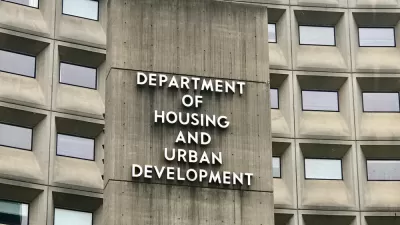The federal government offered to $24 million to create a loan pool in struggling areas of North St. Louis County—most infamously displayed to the country over the past year in the intense racial conflicts centering around Ferguson.
The U.S. Department of Housing and Urban Development announced "the allocation of more than $26 million from the Community Development Block Grant (CDBG) Program for St. Louis County, Missouri," according to a release from the county of St. Louis. Making up the bulk of that total, "St. Louis County received $24 million under the Section 108 Loan Guarantee Program to establish a loan pool for community development projects." In addition to the $24 million, HUD granted $2.4 million in Declared Disaster Recovery Funds for areas damaged by tornadoes and severe storms in 2013.
Local news station KVHS reports more detail about how the money will be spent: "St. Louis County Executive Steve Stenger says much of the money is expected to go to north St. Louis County, including Ferguson, where economic disparity became a focal point during unrest that followed the fatal shooting of Michael Brown by a police officer last year."
The Section 108 Loan Guarantee Program can found projects ranging from "transit-oriented development; mixed-use commercial, retail and multi-family rental development; business development loans; and public infrastructure and facilities, including collaborative projects that cross municipal borders," according to the press release.

Study: Maui’s Plan to Convert Vacation Rentals to Long-Term Housing Could Cause Nearly $1 Billion Economic Loss
The plan would reduce visitor accommodation by 25,% resulting in 1,900 jobs lost.

North Texas Transit Leaders Tout Benefits of TOD for Growing Region
At a summit focused on transit-oriented development, policymakers discussed how North Texas’ expanded light rail system can serve as a tool for economic growth.

Why Should We Subsidize Public Transportation?
Many public transit agencies face financial stress due to rising costs, declining fare revenue, and declining subsidies. Transit advocates must provide a strong business case for increasing public transit funding.

How Community Science Connects People, Parks, and Biodiversity
Community science engages people of all backgrounds in documenting local biodiversity, strengthening connections to nature, and contributing to global efforts like the City Nature Challenge to build a more inclusive and resilient future.

Alabama: Trump Terminates Settlements for Black Communities Harmed By Raw Sewage
Trump deemed the landmark civil rights agreement “illegal DEI and environmental justice policy.”

Dear Tesla Driver: “It’s not You, It’s Him.”
Amidst a booming bumper sticker industry, one writer offers solace to those asking, “Does this car make me look fascist?”
Urban Design for Planners 1: Software Tools
This six-course series explores essential urban design concepts using open source software and equips planners with the tools they need to participate fully in the urban design process.
Planning for Universal Design
Learn the tools for implementing Universal Design in planning regulations.
City of Santa Clarita
Ascent Environmental
Institute for Housing and Urban Development Studies (IHS)
City of Grandview
Harvard GSD Executive Education
Toledo-Lucas County Plan Commissions
Salt Lake City
NYU Wagner Graduate School of Public Service





























